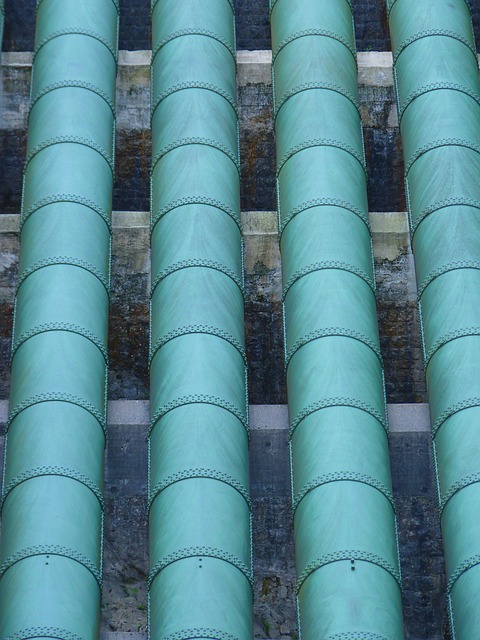Low water pressure issues stem from various causes like leaks, corrosion, and improper regulators. Before fixing, assess your plumbing system thoroughly. DIY solutions like testing pressure, flushing residues, and replacing aerators offer quick fixes. Persistent problems require repairing leaks and upgrading fixtures to improve pressure sustainably. Choosing cost-effective methods prevents future issues and reduces utility bills.
Low water pressure can be a frustrating household issue, but there are cost-effective solutions to resolve it. This comprehensive guide explores various approaches to tackling low water pressure fixes, from identifying root causes to long-term savings strategies. We’ll break down simple DIY solutions for quick repairs and detail equipment upgrades that offer lasting improvements. By understanding your plumbing system and implementing smart strategies, you can enhance water pressure and cut costs.
- Understanding Low Water Pressure Causes
- Assess Your Plumbing System
- Simple DIY Solutions for Quick Fixes
- Cost-Effective Equipment Upgrades
- Long-Term Savings Strategies
Understanding Low Water Pressure Causes

Low water pressure is a common household issue that can be attributed to various factors. Understanding the root causes is the first step in finding an effective, cost-efficient solution. One of the primary reasons for low water pressure could be issues with your plumbing system, such as leaks, corrosion, or narrow pipes that restrict water flow. Another common factor is an outdated or improperly adjusted water pressure regulator. Over time, these regulators can malfunction, leading to a constant low pressure throughout your home’s plumbing.
Additionally, the presence of multiple appliances drawing water simultaneously can cause a drop in pressure. High-pressure pumps for home use might seem like an obvious fix for low water flow in the shower, but they are often unnecessary and expensive. A simpler solution could be as easy as adjusting your water pressure regulator or repairing any leaks that may be causing the pressure to dip.
Assess Your Plumbing System

Before tackling any low water pressure fix, it’s crucial to assess your plumbing system to understand water pressure issues. Start by checking visible signs of leaks or corrosion in pipes and fittings. Identifying water leak causes can often provide quick solutions, such as replacing faulty valves or repairing damaged pipes.
Next, consider the overall age and condition of your plumbing infrastructure. Older homes may have outdated systems that struggle to maintain adequate water pressure. Temporarily increasing water pressure with quick fixes might offer relief, but addressing the root cause—whether it’s a clogged aerator, collapsed pipes, or a faulty pressure regulator—is essential for lasting solutions to low water pressure fix problems.
Simple DIY Solutions for Quick Fixes

For those dealing with low water pressure issues, there are several simple DIY solutions that can offer quick fixes and save you from costly professional services. The first step in addressing any water pressure problem is to how to test water pressure—a straightforward process involving a pressure gauge and some basic tools. Once you’ve confirmed the issue, a variety of low water pressure fix methods become accessible.
One common cause of low water pressure is a build-up of sediment or mineral deposits in your pipes. Regularly flushing out these residues can significantly improve water flow. Another DIY solution involves checking and replacing aerators on faucets and showerheads, as these can restrict water flow. For more persistent water pressure problems solutions, consider inspecting and repairing any leaks in your plumbing system—a leak can drastically reduce the overall water pressure in your low water pressure in entire house.
Cost-Effective Equipment Upgrades

Many homeowners often overlook the importance of regular equipment upgrades when it comes to fixing low water pressure issues. While immediate solutions like temporarily increasing water pressure or unclogging drains can provide a quick fix, they are not sustainable in the long run. Investing in cost-effective equipment upgrades is a more efficient strategy for a permanent low water pressure fix.
Upgrading your home’s plumbing fixtures and appliances can significantly improve water pressure. For instance, installing low-flow aerators on faucets and showerheads reduces water usage without compromising too much on pressure. Additionally, replacing outdated or clogged pipes with new ones ensures optimal water flow throughout your home. These upgrades not only resolve the issue of low water pressure but also contribute to overall energy efficiency and long-term savings.
Long-Term Savings Strategies

Implementing a low-pressure solution doesn’t mean sacrificing long-term savings. In fact, it’s quite the opposite; it’s a strategic investment in your home’s plumbing system. By opting for cost-effective low water pressure fix methods, you can prevent bigger issues down the line that may require costly repairs or replacements. For instance, repairing broken water pipes not only saves you from immediate leaks but also reduces the risk of water damage and its associated costs.
Additionally, maintaining whole-house water pressure is crucial for ensuring every faucet and appliance functions optimally. A temporary increase in water pressure can be a quick fix, but sustainable solutions focus on overall efficiency. This includes installing low-flow aerators or high-efficiency showerheads, which reduce water usage without compromising performance. These strategies not only lower utility bills but also contribute to environmental conservation.
In addressing low water pressure, a combination of quick fixes and strategic upgrades can deliver significant improvements. From understanding root causes to assessing your plumbing system, DIY solutions like clearing aerators and replacing showerheads can offer immediate relief. For longer-lasting results, investing in cost-effective equipment upgrades, such as high-efficiency fixtures and pressure regulators, ensures sustained performance. Implementing long-term savings strategies further optimizes water usage and cuts costs. By implementing these steps, you can effectively fix low water pressure while reaping substantial financial benefits over time.
